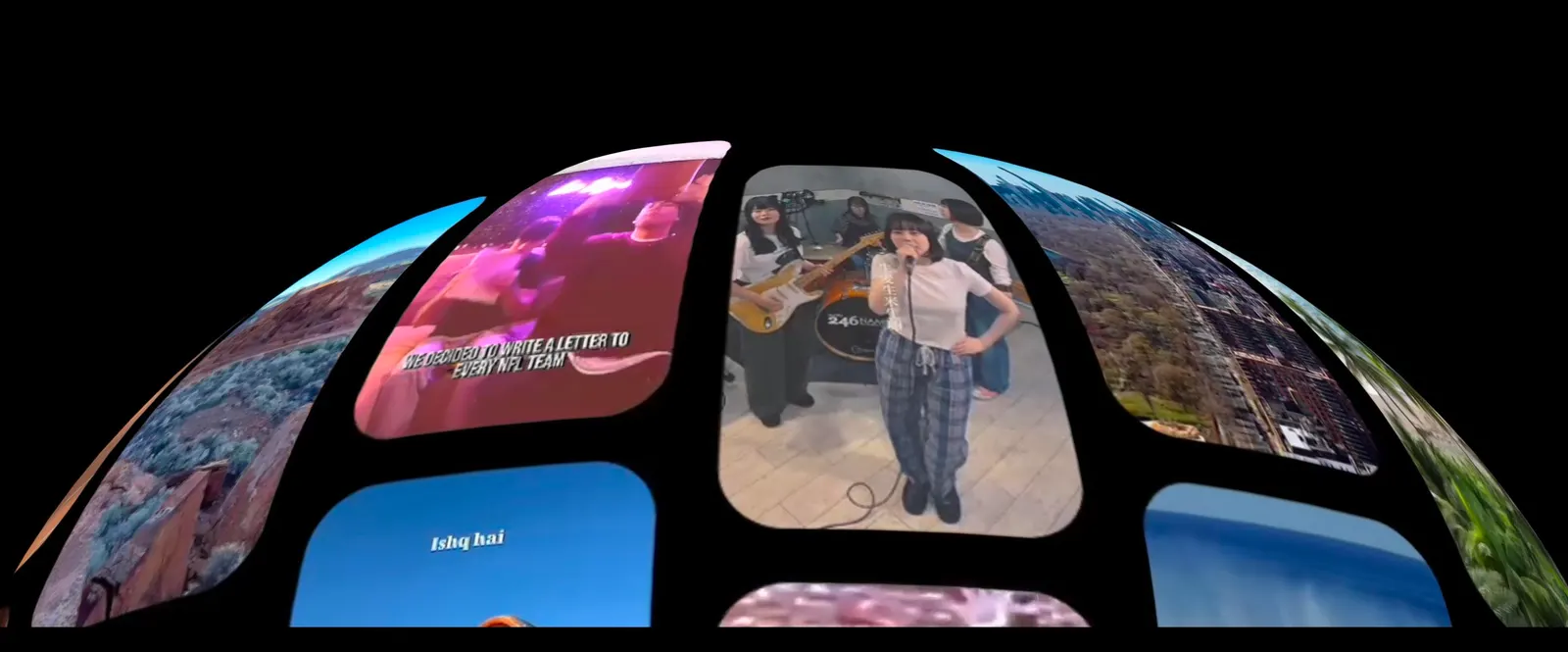The poster image for The True Cost released 10 years ago
“It’s 10 years later, and there’s still not a week that goes by that I don’t get a handful of notes from people that have started a company, or maybe just changed their personal habits because of the documentary,” says Andrew Morgan, the director of The True Cost, via video call.
A decade ago, The True Cost, a documentary about the global economic, social and environmental impact of our growing fast fashion habit, premiered at the Cannes film festival.
It was reviewed by the New York Times, CNBC and, more surprisingly, it got the attention of the glossy fashion media who had, up until that point, often skirted the industry’s darker issues. Vogue and Harper’s Bazaar applauded its brave storytelling. It was screened at the World Economic Forum and influential figures Emma Watson, Tom Ford and Net-a-Porter founder Natalie Massanet attended viewings.
It was put onto YouTube two years ago where it has amassed over 500,000 views, despite being eight years old at the time of upload. Many have credited it with popularizing the term ‘fast fashion’.
On its anniversary, I spoke to the people involved in its creation about why it still stands up today and what has happened in the sustainable fashion movement since.
In 2013, Morgan picked up the New York Times with a front-page image of a wall of missing person’s signs in Bangladesh and read about the Rana Plaza factory collapse which killed 1,134 people. When Morgan realized that these people died making clothes for brands that he knew and owned, he realized that he had never thought about where his clothes came from and set about making his first feature length documentary film to find answers.
The shocking images of the Rana Plaza disaster in 2013 inspired Andrew Morgan to make The True Cost
Funded by a Kickstarter, he and a couple of friends went on a journey that took them from America to France, England, Bangladesh, China, Cambodia, Haiti and many more countries tracing the origins of clothing.
“The vision that I had at the very beginning was to take you back and forth in very unsettling ways between the rich world and the, oftentimes, still developing world,” he says. “I just knew enough to know if it was a film only about Bangladesh, you could write it off, you could keep it at arm’s length. It could be conveniently ‘out of sight, out of mind’, like it had been for me my entire life.”
One of the documentary’s most harrowing moments is a montage sequence of shoppers storming stores in Black Friday hysteria, interspersed with scenes of the dire conditions faced by the people who work extraordinarily hard to produce the latest trending items.
Morgan says this was influenced by his own experiences making the film where he might be at a fashion runway show in Milan and in the same week visiting the slums where the garment workers lived. “That had such a visceral effect on me, that that then began to be what oriented the whole film.”
It’s this personal perspective and emotive story telling that makes it such a standout documentary, says Lucy Siegle, an author, journalist and producer on The True Cost. “I think what’s often missed or eclipsed is what an amazing director and filmmaker Andrew Morgan is. He is really, really talented, and to have his lens, literally, on my subject, it was just such a gift. And that’s why it’s endured.”
Morgan contacted Siegle after reading her 2011 book To Die For during his research. At the time, Siegle was facing hostility from the fashion world for publishing it. “I had a lot of people in the fashion industry calling me a liar publicly. There were lots of legal threats around, you couldn’t really criticize a brand,” she says.
Siegle credits The True Cost with helping to legitimize her book and grow awareness to the point that the industry could no longer deny the issues.
However, many involved in the documentary believe that despite awareness, the fast fashion problem is only getting worse.
A Decade of Mixed Progress
“That uncaptured corporate power that can move between countries and work around existing laws and infrastructures and continue to create enormous profit at the expense of people and the environments in which they work… I want to be very clear, to me, that has not gotten much better globally,” says Morgan.
Just in the past week, Loro Piano has been placed under court administration over alleged worker exploitation in its supply chain, Shein has been fined in France for failing to declare microplastic pollution and the International Labour Organization warned that US tariff hikes could threaten garment worker rights.
Livia Firth, another producer on the documentary who founded sustainability consultancy Eco Age and now runs the farming project Quintosapore, agrees. “We’re not even worried about fast fashion anymore, because it’s about ultra-fast fashion… we’re not even fighting with fashion brands anymore, we’re fighting with algorithms,” she says referencing the rise in companies like Shein and Temu which use technology solutions to respond to trends and demand at rapid pace.
The rise of ultra-fast fashion in the past 5 years has exacerbated the problem of fashion waste
Many of the documentary’s expert talking heads painted a mixed picture on progress in their specialist areas too.
Roger Lee, CEO of manufacturing company TAL Apparel, says that while he’s unconvinced that many consumers have changed their habits, awareness amongst brands has grown considerably, driving business to his company. “It’s levelled the playing field for ethical producers,” he says.
At the same time, he says he still hears rumors of manufacturers keeping double books, a practice of withholding truthful business accounts and presenting falsified documents to pass audits.
Dr Christina Dean, the founder of Redress, an NGO focused on implementing circular fashion, has seen the issue of fashion waste, which is only touched on briefly in The True Cost, come to the foreground as a growing problem in recent years. “Fast fashion still isn’t facing consequences,” she tells me via video call. However, solutions are also gaining traction: “There’s a lot of investment into textile recycling infrastructure. I’m hopeful that someone will crack doing this at scale.”
The low cost of conventional cotton is preventing farmers from transitioning to regenerative … More
LaRhea Pepper, a cotton farmer, shares on camera in the documentary how she lost her husband to an aggressive form of brain tumour believed to be caused by chemical use in industrial farming. She has spent much of her life campaigning for organic farming.
She told me on a call that market demand for organic cotton has increased greatly in the past decade, but there is a lack of support for farmers transitioning to organic and regenerative practices. “There’s stronger market pull, but farmers are struggling to do the transition. They need access to resources. They need education,” Pepper says. “The conventional market for cotton is the pits. It’s below cost production, so those farmers do not have the opportunity to spend money on cover crops,” she adds referencing the plants grown solely for protecting and enriching soil which organic farmers use.
Some philanthropic brand investments are positive steps but Pepper calls these “islands of good” and feels we’re not yet at the tipping point of wider change.
An Enduring Call To Action
Siegle says The True Cost remains just as relevant today: “I think a film today would, apart from having a greater emphasis on waste, be pretty similar,” she says. “A lot of people have said to me that they want to do a remake and update it. But I think a lot of it is still to be dealt with.”
A garment worker strike in Dhaka in March 2025
One of the noticeably dated aspects of the documentary is the fashion itself, which today serves as a reminder that as trends come and go, the injustices in the system remain largely unchanged.
But Morgan still has hope. “I still believe that it’s not a lost cause. I still believe in the sense that we can’t just outsource this to companies, or even governments. All of the substantial progress I have seen made in this space, and others like it, has come from everyday people. It has come from people who take their role as more than consumers, as actual citizens, seriously. I just think it’s a long journey, and we’re still in the middle of it.”
This is evident in what happened next with The True Cost’s protagonist, Shima Akter, a young Bangladeshi garment worker who had travelled far from her children and family to work in a factory. Morgan tells me there was an outpouring of people wanting to help her following the film’s release and they crowdfunded to buy her a piece of land in her village. Morgan assumed Akter would leave her job at the factory, but she decided to stay and become a leader in her trade union. Today she is still fighting for the rights of her colleagues. “She took that generosity, internalized it to benefit her family, and then kept fighting. I always thought that was the coolest thing,” says Morgan.
Ten years on, the challenges may still loom large, but The True Cost remains a relevant and vital tool to take on that challenge. Morgan’s message remains unchanged: “This is an invitation to see yourself as a human being, alive in a world that is unfinished, and as a person capable of playing a vital role in this story right now.”


